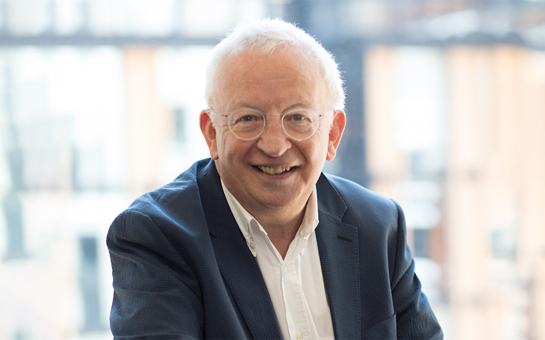- Edward Gregson
Piano Sonata in one movement (1983)
- Novello & Co Ltd (World)
Commissioned by Richard Deerin with funds from the Arts Council of Great Britain
Programme Note
The alternation of six blocks of music called 'Tempi' by the composer provides the structural principle of this single-movement sonata, written in 1983 and revised in 1986.
Tempo 1. An ascending arpeggio figure, rooted on C. On its third appearance it flowers into a fully lyrical expression.
Tempo 2. Strident - octave figurations, answered by fanfare-like motifs.
Tempo 3. Dance-like, fast and energetic, often leading to a lyrical and simple melodic utterance.
Tempo 4. Slow, slightly austere.
Tempo 5. A series of quiet, repeated chords, with low bass rhythmic answers.
Tempo 6. A scherzo
Tempo 5 and 6 do not appear until the middle section, where they plan an important role, often integrating with earlier material. The sonata's 'recapitulation' begins with Tempo 1, this time blossoming into a fully developed melodic statement. The sonata ends as it began, with three statements of the rising arpeggio of Tempo 1.
A traditional aspect of sonata structure is also apparent, however, in the broad pattern of exposition - development - recapitulation which lies behind the continuous development and reworking of ideas, regarded by the composer as 'an essentially dramatic gesture'. The work was commissioned by Richard Deering, with funds provided by the Arts Council of Great Britain, and was first performed by him in the Purcell Room, London, on February 18th, 1983. The first performance of the revised version was given by Andrew Ball, also at the Purcell Room, on November 21st, 1986.
Edward Gregson
Tempo 1. An ascending arpeggio figure, rooted on C. On its third appearance it flowers into a fully lyrical expression.
Tempo 2. Strident - octave figurations, answered by fanfare-like motifs.
Tempo 3. Dance-like, fast and energetic, often leading to a lyrical and simple melodic utterance.
Tempo 4. Slow, slightly austere.
Tempo 5. A series of quiet, repeated chords, with low bass rhythmic answers.
Tempo 6. A scherzo
Tempo 5 and 6 do not appear until the middle section, where they plan an important role, often integrating with earlier material. The sonata's 'recapitulation' begins with Tempo 1, this time blossoming into a fully developed melodic statement. The sonata ends as it began, with three statements of the rising arpeggio of Tempo 1.
A traditional aspect of sonata structure is also apparent, however, in the broad pattern of exposition - development - recapitulation which lies behind the continuous development and reworking of ideas, regarded by the composer as 'an essentially dramatic gesture'. The work was commissioned by Richard Deering, with funds provided by the Arts Council of Great Britain, and was first performed by him in the Purcell Room, London, on February 18th, 1983. The first performance of the revised version was given by Andrew Ball, also at the Purcell Room, on November 21st, 1986.
Edward Gregson
Media
Discography
More Info

- Edward Gregson celebrates 80!
- 22nd July 2025
- Celebrating his 80th birthday this year, Gregson's music is being performed and highlighted all year. Discover some of the international performances of his work over the coming months here.

 Located in the UK
Located in the UK
 Located in the USA
Located in the USA
 Located in Europe
Located in Europe